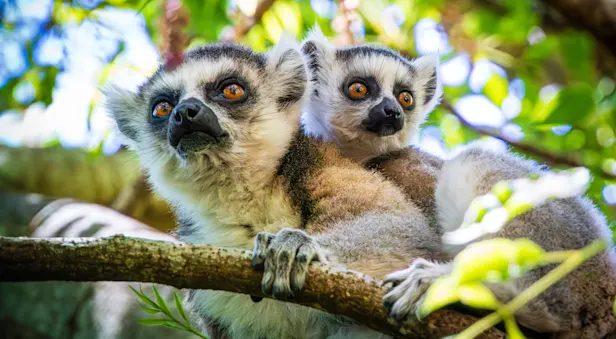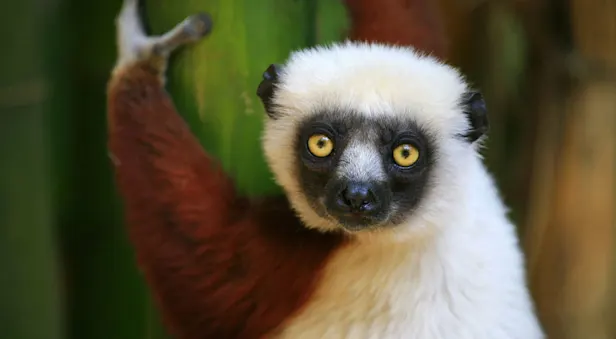
Know Before You Go


True Lemur Facts | Madagascar Wildlife Guide
The lemurs within this family are the most familiar of the lemurs, the most popular of which is the ring-tailed lemur. The true lemur family is comprised of brown lemurs and bamboo lemurs.
Ring-tailed Lemurs
Madagascar’s most famous resident is the iconic ring-tailed lemur. It has a gray coat, white belly and white face with black rings around its burnt-orange eyes and a black muzzle. This lemur’s name arises from its long, banded black-and-white tail. The ring-tailed lemur uses its tail to communicate, covering it in scent markings, waving it in the direction of aggressors, and keeping it erect, like a flag, to keep a troop together while traveling through the forest. These highly gregarious animals form groups of between 5 and 30 individuals that are presided over by a dominant female.
Unlike most lemurs, this species spends about 40 percent of its time on the ground. It is diurnal, traveling, sunbathing and gathering food during the day. Scent glands on its chest and wrists mark foraging routes as the lemur feeds upon leaves, flowers, tree bark and fruit.
Ring-tailed lemurs have a wide range of facial expressions and are highly vocal—their repertoire includes soft purrs toward their infants, meowing to contact a dispersed group, territorial howls, aggressive grunts against an opponent and barking alarm calls.
Females become sexually mature at three years old and are only in estrus for a one- or two-day period each year. Mating takes place starting in mid-April, and a single infant or twins are born between August and September. Infants cling to their mothers’ stomachs and begin riding on her back after two weeks. They are weaned at approximately six months. The entire troop cares for the young.
Red-ruffed Lemur
The red-ruffed lemur is the largest member of the family Lemuridae. From the top of the head to the tip of the tail, they can grow up to 4 feet long and weigh 8 to 10 pounds. They are diurnal, quadrupedal and produce a harsh, guttural vocal call that is distinctive from other lemur species. They have thick, red fur, a white patch on the back of their neck, yellow eyes and black faces, underparts and tails.
Ruffed lemurs are primarily frugivorous and are important seed dispersers, supplementing their diet with shoots and leaves. They typically form matriarchal groups that include large multimale/multifemale troops of 16 to 32, to smaller communities of 4 to 5 adults or a pair-bonded male and female with their young. Red-ruffed lemurs are found only in Eastern Madagascar and are critically endangered—clear-cut forests displace them from their home and the fruiting trees they rely on.
Black-and-White Ruffed Lemur
The black-and-white ruffed lemur is one of the largest lemurs alive today. It is similar in size to the red-ruffed lemur. True to their name, these lemurs have black-and-white coloring with a ruff of long, white fur around their neck and ears. Groups of two to five lemurs share a home territory, sounding alarm calls when they spot predators such as boa constrictors, eagles and fossa and making neighbor lemur troops aware of their boundaries with their loud cries.
Unlike most lemur varieties (and other primates), female black-and-white lemurs have two to three babies at one time. Upon birth, they hide their babies in a safe place. It is only when a baby reaches three weeks of age that it begins to follow its mother around, and it can fully keep up with her by the time it is seven weeks old.
Greater Bamboo Lemur
The largest of the bamboo lemurs, weighing more than 5 pounds, this primate has a thick olive-brown coat with a rust-colored back and tail, gray-brown underparts, and pale white or gray ear tufts. They have short muzzles and rounded faces along with relatively long tails and back legs for leaping through trees. This social animal lives in groups of up to 28 individuals. The bamboo lemur’s highly specialized diet makes suitable habitat hard to find, and it is currently critically endangered due to slash-and-burn agriculture, mining and logging.

































